Project collaboration, workplace collaboration, and online collaboration are huge buzzwords in the workplace, and they go hand-in-hand for teams—both remote and in physical offices. So, what exactly is the difference between them? Well, there really isn’t a difference in today’s world.
Even if your team is in the office full-time, they will likely still use some form of online collaboration tool. Sure, they can lean over to one another’s desks for a chat, but keeping track of tasks, conversations with external partners, or even just firing off a message to a colleague outside the office? That’s all collaboration, and these days, they all typically involve some kind of online collaboration tool.
Let’s start by breaking down online collaboration and how you can improve yours.
What is collaboration?
Collaboration is when two or more members of a team work together to brainstorm ideas, solve problems, complete projects, and achieve common goals.
This can happen in the office or while working remotely, and it typically involves collaboration tools. These can be referred to as business collaboration tools, online collaboration tools, digital collaboration tools, project collaboration tools, the list goes on and on.
Regardless of what you call it, the collaboration tool or team collaboration software that you use is important. These tools empower teams to work quicker, more efficiently, and from different locations (including across the room in the same office). Let’s take a look at the advantages and benefits of online collaboration and how to successfully implement a project management strategy that drives your goals.
What is online collaboration?
Online collaboration is a collection of processes and tools that empower people to interact with each other via web-based systems, software, and apps to share information, co-edit documents, communicate in real time, and work towards a common goal in a productive and efficient manner.
Team collaboration tools are one of the best ways for companies with large staff sizes and remote employees to streamline workflows. Designed to facilitate and improve efficiency, productivity, and innovation, online collaboration combines social media, traditional business, and crowdsourcing to create an experience unlike anything else.
Since collaboration is also progressive in nature, it is an ideal platform for forward-thinking businesses because it nurtures innovation, reduces potential issues, and generally creates a more enjoyable, less stressful work environment. For businesses that operate outside of a centralized location, remote collaboration tools are a dream come true and allow multiple team members to connect digitally.
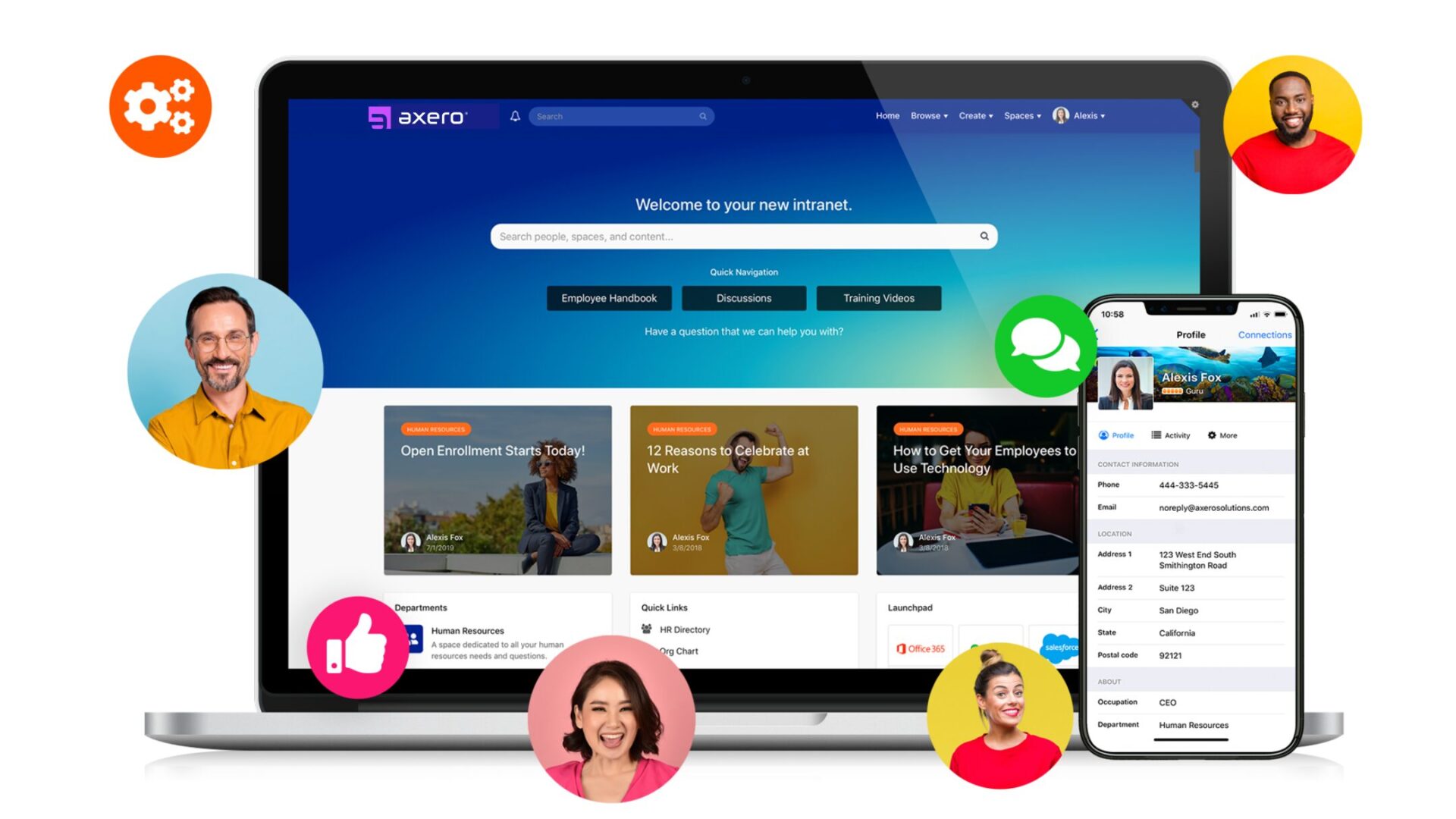
Why is online collaboration important?
If you want your business to get the most out of collaboration tools, consider the reasons why you want to collaborate in the first place. Project collaboration tools can provide a range of benefits to your teams, including:
- Saved time — Time is of the essence in any industry and the more time you can save, the more productive teams can be. When employees collaborate with each other, they save your organization time by achieving the end goal quicker. Information is readily available, and team members can collaborate in real-time, no matter where they are.
- Strengthened team relationships — Your team doesn’t need to be best friends, but strong interpersonal relationships help people to know how best to support one another. Having a business collaboration tool is an excellent way for employees to feel more comfortable working together. Collaboration connects employees to each other and to your company culture, while moving projects forward.
- Improved project management — Managing a project and team comes with challenges. Project collaboration tools are a great way to ensure your team is making the most out of their time, while communicating effectively and keeping mistakes that can be avoided at bay. When people work together and have the resources they need to communicate and collaborate, the chances for major setbacks dissipate immensely.
- Enhanced organization — It’s easy for information to go missing when you’re in the middle of a project, which wastes time and takes away from progress. Every organization should strive for strong internal communication because it gives team members a structure and keeps projects on track. In many cases, team collaboration tools are the best solutions to improve internal workflows and processes because they are designed for collaboration, making it far easier to track progress made or share knowledge.
Different levels of collaboration in your organization
There are different project collaboration tiers, each with their own unique benefits. Learning how to work together effectively is all about understanding which business collaboration tools and strategies accomplish your goals. Here are the most common levels of collaboration.
- Group level — Collaboration is all about a group of individuals working together to accomplish a common goal. Often referred to as “group level collaboration,” this type of collaboration usually involves an intimate group of key members (maybe 2 or 3 people) working together on the same project. When the right tools are being used, information, task management, and project management are centralized in one place.
- Team level — Next is team level, which typically involves working with a larger group, or multiple teams, to improve initiatives on a larger level. This could include customer service initiatives, updating the UI of your social space, or the development of webinars.
- Network level — If group level is a micro approach, network level collaboration is macro. Network level takes into consideration your organization and outside individuals who are directly tied to what you do, like contractors, agencies, clients, board members, or partners. This is the major difference between team and network levels: team level typically only involves internal employees, while network level involves internal and external groups.

3 crucial elements of online collaboration
Online collaboration relies on a couple of key factors for peak performance. We narrowed it down to three essential components: people, processes, and technology.
1. People
The first and most crucial element of team collaboration is people. The people involved in a project are the source of innovation and fuel collaboration with ideas and knowledge.
Whether a project team is a few people or many, here are the typical key players involved:
- A skilled leader — Collaboration doesn’t work efficiently without a skilled leader who keeps the task and team on track and fully aligned with needs and expectations.
- A competent team — A competent team is made up of employees who are capable of adapting their style of work without issue and contributing ideas and information to move a project forward.
- A shared goal — One of the most crucial aspects of quality online collaboration is that everyone needs to be working toward a common goal. This is what drives people to be engaged and contribute meaningfully.
- Trust — Building trust can be difficult when in-person communication isn’t always an option, but remote collaboration tools empower team members to chat and work together in meaningful ways.
2. Process
Process, the second element of online collaboration, is less tangible than the first. Process pertains to the workflow that team members will follow, taking into consideration all of the factors that a socially collaborative environment requires. In general, people who are used to a typical business model will have to adjust their process slightly by relying less on email and more on project collaboration tools, especially when the project is facilitated through a portal or digital workspace.
When adjusting your process, there are a few factors that need to be considered. Focusing on the following will ensure that you’re getting the most out of online collaboration:
- Strategy — Strategy directly affects how you reach your goal. Having a solid plan that you can refer back to when necessary will help make sure you stay on track. Typically, your strategy is outlined by whoever is leading the team.
- Priorities — Once a strategy is finalized, priorities need to be outlined. Each person who is a part of the team will likely have their own unique set of priorities, although it’s not uncommon for tasks to coincide with each other. A solid strategy and properly outlined priorities will keep all team members aligned and on track.
- Data sharing policies — No one wants to police members, but it’s important to implement data sharing policies when working with people in a collaborative space. When you’re dealing with sensitive information, setting clear policies around data sharing can be an integral part of seeing a project through in the most secure manner possible.
3. Technology
The third and final element of virtual collaboration is technology. One component that often gets overlooked is the importance of technology to modern collaboration. Without it, collaborating with colleagues in faraway places would be impossible. Remote collaboration tools can sound daunting, but with social media tactics merging with workplaces, project management tools will likely feel familiar.
There are a few technological platforms that can foster online collaboration, including:
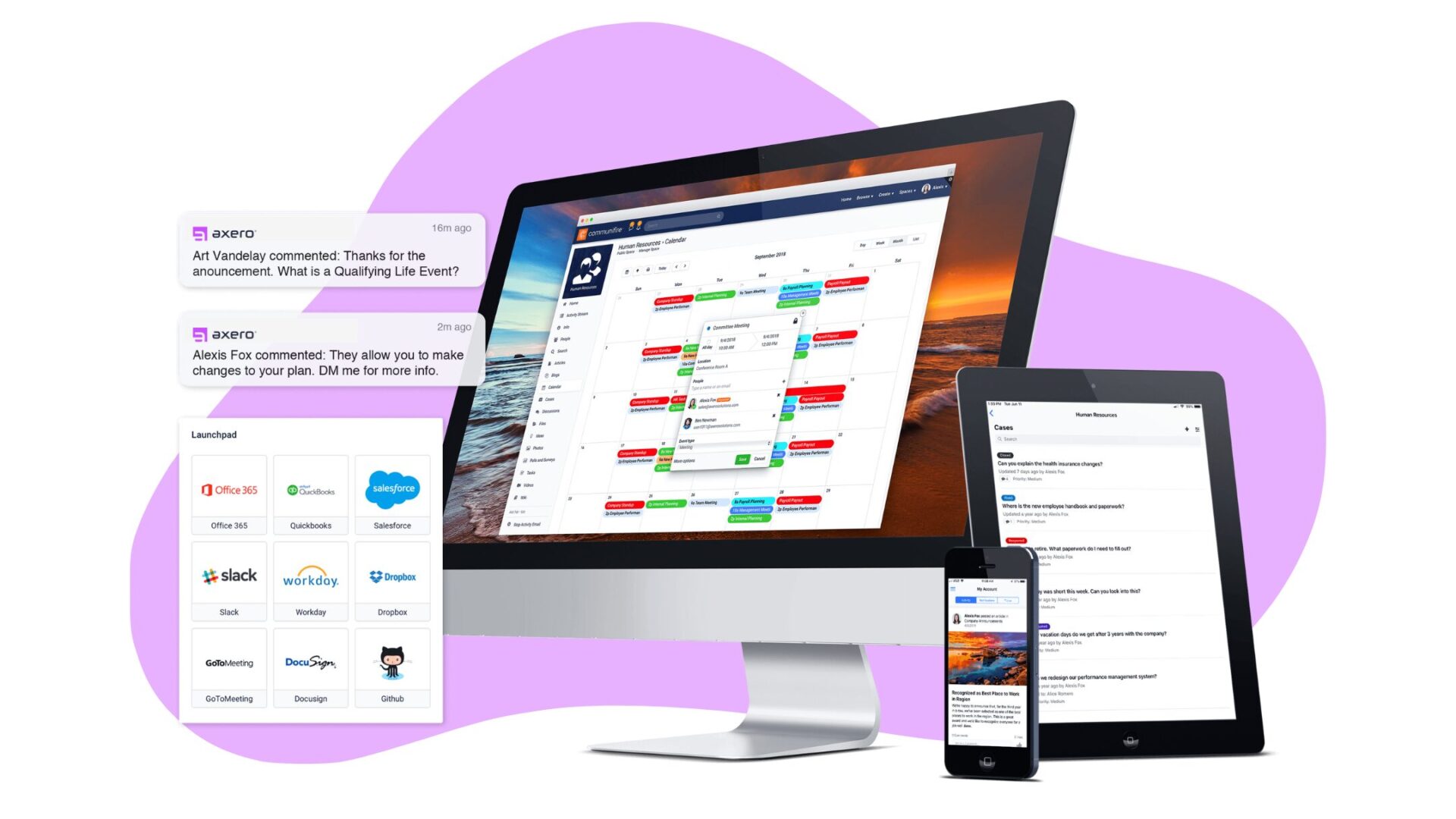
- Intranet software — Without intranet software, online collaboration wouldn’t be nearly as streamlined as it is today. Company intranet software serves as a portal that allows employees to build discussions, share documents, schedule meetings, and perform a variety of other essential tasks.
- Video conferencing — Most businesses use audio and video calls to some extent, and some wouldn’t be able to get by without it. When combined with virtual collaboration tools, video conferencing tools can be quite powerful with examples such as Zoom and Microsoft Teams.
- Integration with existing systems — Integrating online collaboration tools and teleconferencing tools with systems that already exist in your workplace is important. Sales, inventory, and other existing systems can get lost in the shuffle when transitioning to an online collaborative environment. More often than not, it comes down to choosing the right type of modern intranet software, as not all options allow you to consolidate everything into one spot.
What are common features many online collaboration tools share?
Team collaboration has always played an important role in innovation. In the past, team members had to work in the same office in order to collaborate. Phone and email certainly made things easier for remote employees, but these were not enough. As technology advanced, digital workplace and intranet software with online collaboration tools made their way to the forefront.
Intranet comes in a variety of different shapes and sizes, but the cornerstone of just about every option is increased collaboration abilities. With an intranet’s team collaboration tools on your side, you can ensure that everyone on your team is able to work together without running into various boundaries, even if they’re located across the world.
While no two intranet platforms are exactly alike, there are a number of common features that are standard among most, including:
Document sharing
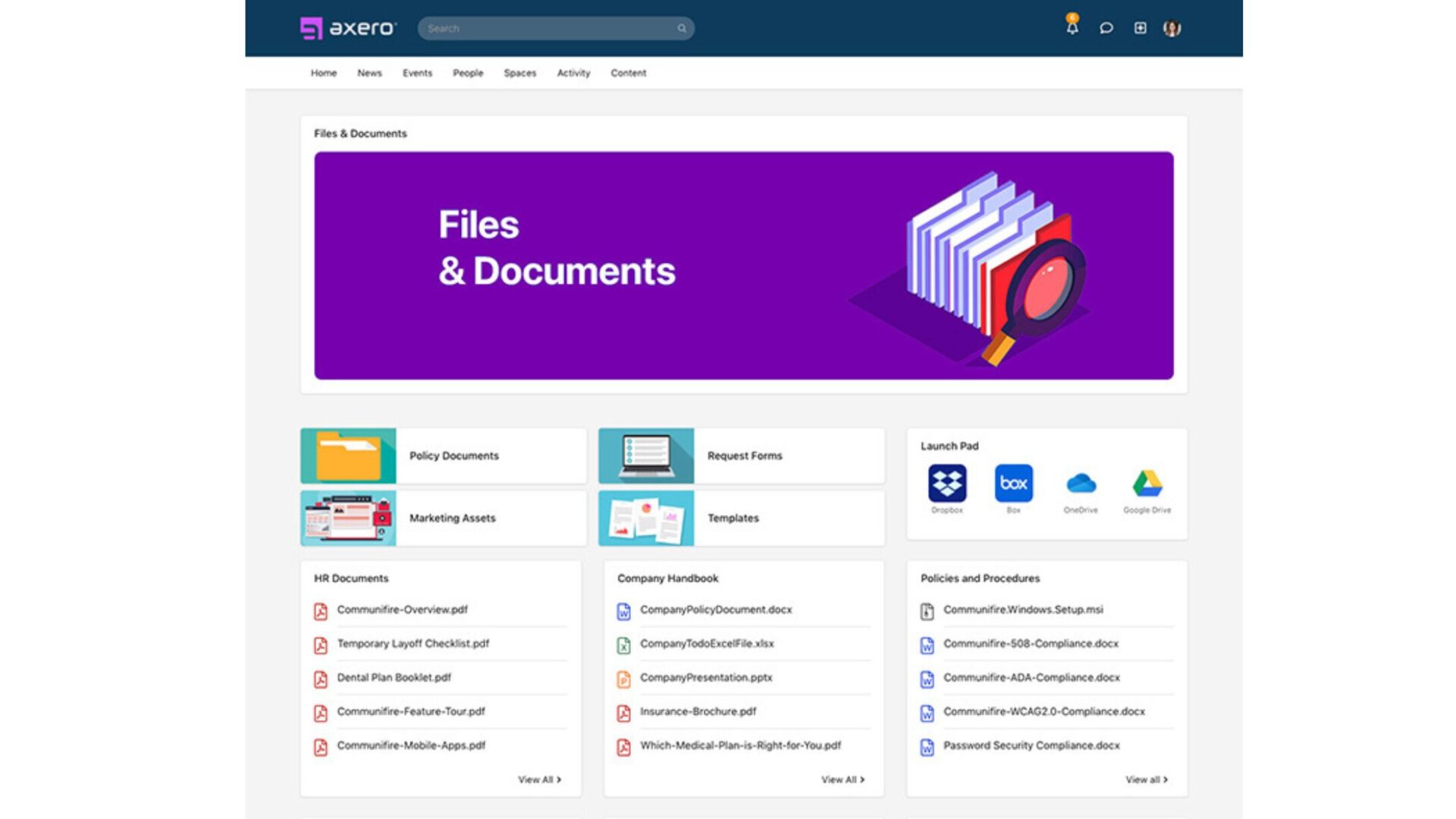
The ability to share documents in a streamlined manner is important for those who are attempting to collaborate. Most intranet platforms feature robust document management systems, ensuring that you and the rest of your team can share essential files with ease and work on the same document together.
There are various tools you can use for document and file sharing such as Dropbox and Google Docs, which you can access from your Google drive. However, reaching out for a custom intranet platform will provide you with this collaboration feature and so much more.
Internal communication system
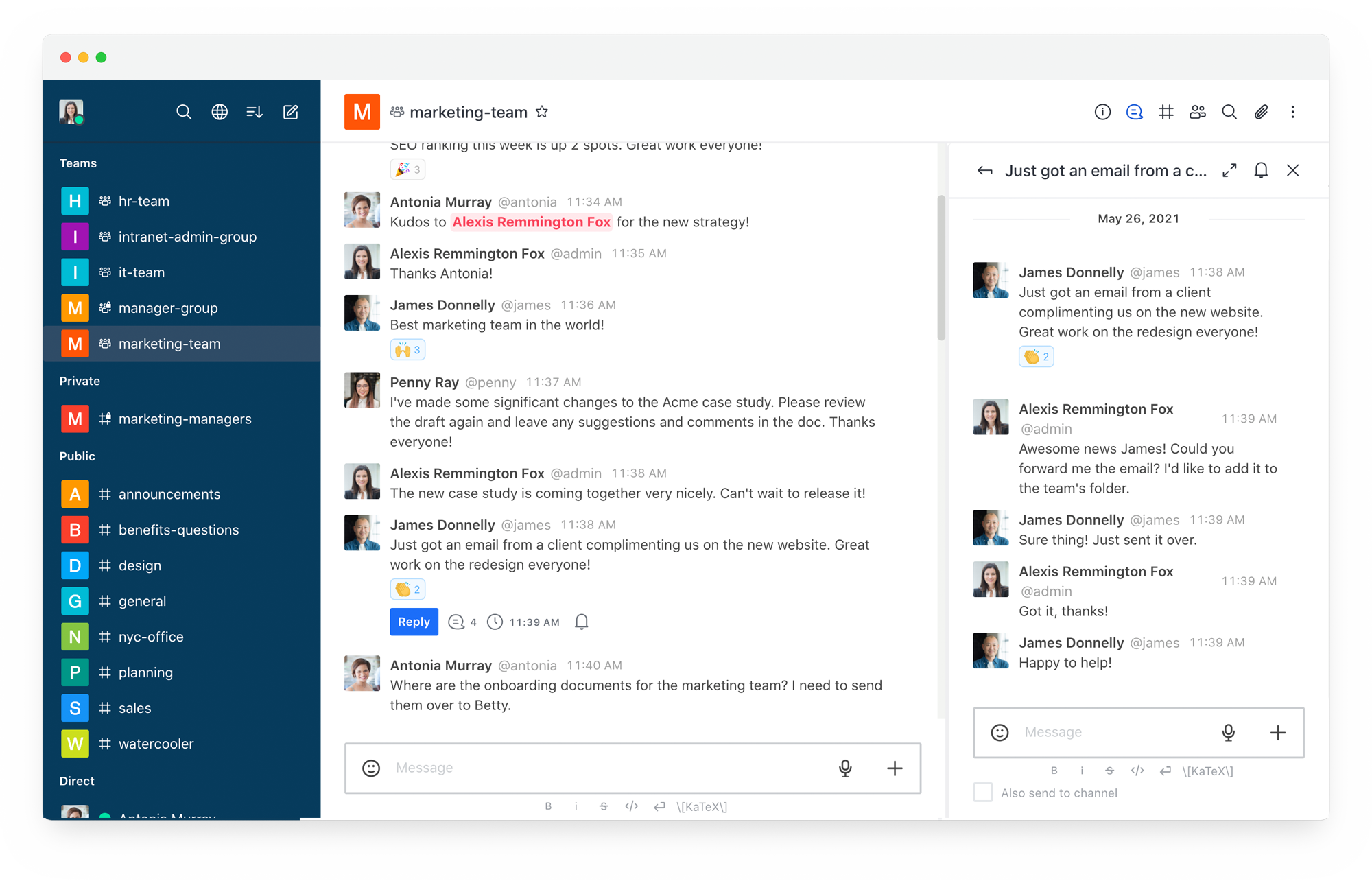
Your team needs to be able to communicate in as efficient a manner as possible to stay on task and avoid overlooking important aspects of a project.
Well-designed intranet platforms can replace email and other commonly used internal communication channels, and since everything is located in one central place, finding archived conversations is a breeze.
Sure, you can use platforms such as Slack for your internal communication system, but notoriously, its security features are not as tight as you’d ideally like. This is why a secure, custom intranet can fill this gap for your business’s internal communication system.
Content creation platform
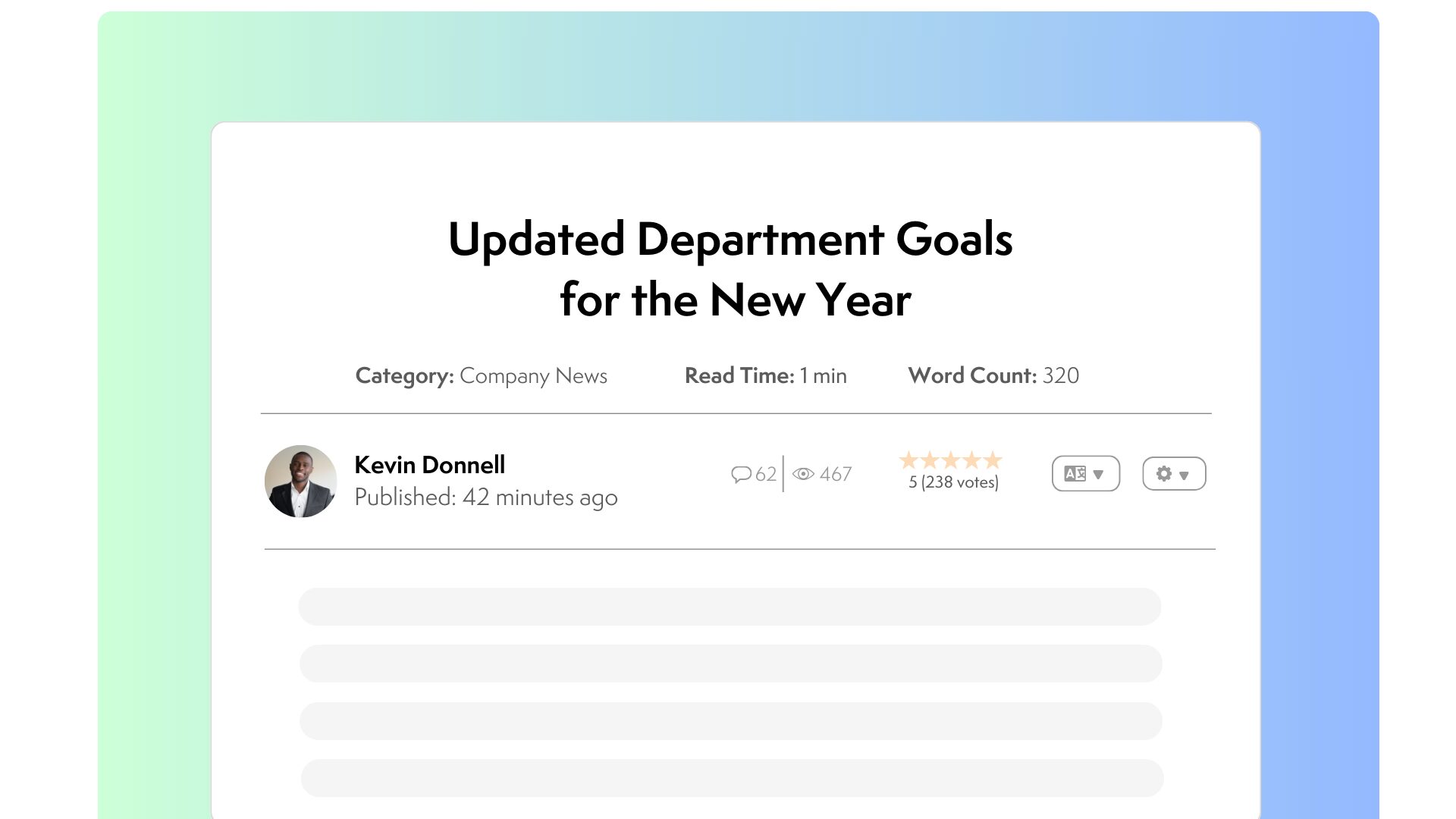
There are many reasons why you might consider creating and publishing content both internally and externally; inbound marketing comes to mind.
Great intranet comes along with a content creation platform that allows you to publish attractive content, such as blogs and corporate wikis, with a few simple clicks. This effectively brings in a new audience and increases your organization’s presence on the web.
You can also make use of collaboration platforms such as Canva, which allows teams to work together and create content like graphics or reports. You can combine your Canva account with custom intranet solutions to create and publish content.
AI-assisted search

Looking for an old document, conversation, or blog post that has seemingly gone missing? Using tags and other variables, online collaboration software allows you to find what you’re looking for quickly and efficiently. Intranet software developers can include robust search features in your package.
Then, an AI assistant, like Axero’s Copilot, can fly through your knowledge library and pull out the relevant information faster than you ever could.
Personal and group calendars
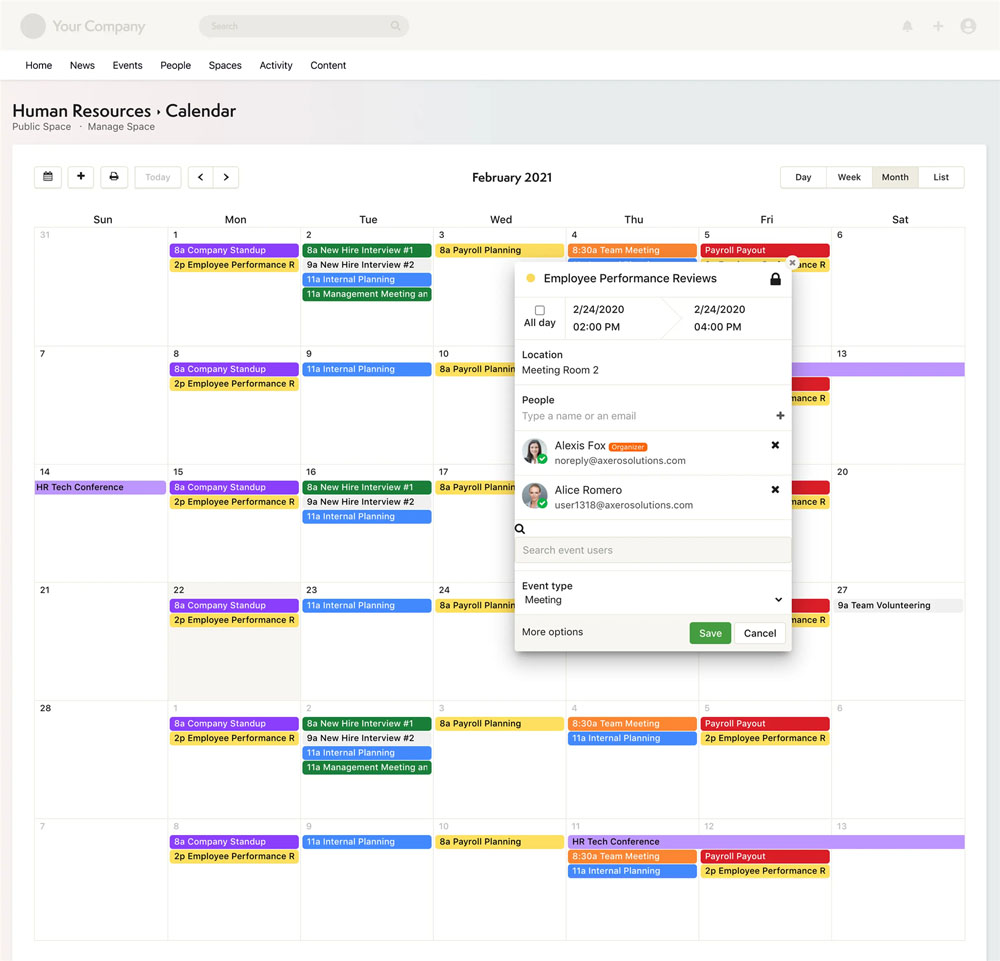
Personal and group calendars are commonplace in most intranet platforms, and they can make all the difference in your business with the ability to keep you present and involved at all times. Of course, your intranet will come with this feature, which is commonly found across many widely known tools, such as Outlook, Microsoft Teams, Google Calendar, and Apple Calendar.
How to tell if your business is ready for online collaboration tools
The big question today is, “are you ready for online collaboration tools?” The adoption and widespread use of team collaboration tools as part of the sales funnel is well documented. For larger companies, these platforms are helping save millions of dollars in improved productivity and efficiency. Virtual collaboration tools are also a growing need for many small businesses.
These are some telltale signs you and your people might be in need of digital collaboration tools.
The need for content aggregation is rising
Faced with the decision of whether to maintain independent, standalone applications or integrate all the systems together, most businesses opt to go with the second option. It saves time and resources and dramatically improves the speed of delivery.
If you are in the knowledge business, the need for aggregating files, folders, and archives has never been as challenging as it is today. Every day, your archive of valuable information increases and the need to locate it whenever it arises help your business remain competitive. Chat apps, instant messaging, wikis, blogs, and discussion forums are valuable knowledge management tools, and most employees use them to store literally everything they need.
Being able to search content authored by the internal team is key to improving productivity. The best collaboration tools are well-suited to deliver this capability.
Innovation is stalling
Most companies have decades of experience tucked away among workers. Some of these workers may have been with the company for years or decades. Their experience and knowledge are invaluable in helping you craft the next phase of your business. How do you tap into this vast resource of knowledge and encourage the sharing of ideas?
Social intranet platforms, like Axero, where employees engage and interact can help monitor, collect, and act on conversations taking place across a company intranet.
Experienced employees know what customer care tactics work, what competitors are doing, and what has worked in the past, or potential ideas that could transform a company. This knowledge cannot be collected in board rooms. It takes time and requires continuous engagement before they can feel free to express their ideas and views.
Project management is a headache
Balancing the elements of a project can be challenging. Time, money, scope, and people need to be properly monitored and controlled for projects to be completed successfully. When working with teams, team members may not always have the needed competencies and access to information. A lack of accountability can result in finger-pointing and blame, which are all unproductive. Poor or lack of communication may also result in project failure in some cases.
The digital collaboration tools found in Axero’s platform can greatly enhance a project’s speed of delivery and communication.
You can keep and monitor all your documents, tasks, and conversations together and have everyone on the same page with activity stream updates. Assign tasks and sharing among team members is also much more seamless, and locating information from blogs, forums, wikis has never been easier.
Tips for implementing online collaboration tools into your business
For the most part, the concept of online collaboration makes perfect sense. Implementing it into a business that hasn’t used it in the past, however, sometimes comes along with an adjustment period.
If you’re able to internalize the following tips, you should be able to get on track with minimal interruption should a problem occur!
Start slow, but start now
Transitioning to an entirely new type of work environment can be a jarring process, especially for team members who have never used a business collaboration tool in the past. Starting slow allows you and your teams to dip your toes into the water rather than dive in head first, which typically results in less stress and associated issues. If your team is overly confused, productivity is only going to fall.
Choose the right online collaboration software
With so many different options to choose from, finding a collaboration tool that is right for your company can be a trying experience. Look for that which allows you to communicate via posts/messaging with others in your space, share documents without issue, create wiki pages and blogs, and pitch ideas to the entire community (as well as smaller groups within the community). Avoid one-size-fits-all software, which cannot be tailored specifically to the needs of your organization.
Get everyone on the same page
For some people, online collaboration is not only a new and exciting concept but something to base a career on. Others may want to stick to the old ways. However, even for those who are more comfortable with bygone eras, there will be some online collaborative tools that just make more sense to use.
Encourage people to buddy up, arrange training days, make sure there are resources available to help people to learn how to use the tools, and check in regularly to ensure that no one is getting left behind.
Focus on open communication
In order for collaboration to truly work, communication has to be placed at the forefront of every project. Your team should always feel comfortable communicating about concerns or questions they may have, as well as whatever other input might push a project in a forward direction. Team leaders should do whatever they can to build a more open environment for communication whenever possible.
Hold daily status meetings
Collaboration software is an excellent tool for ensuring your entire team is on the same page throughout the course of a project, but it doesn’t end there. Daily status meetings can be exceptionally helpful, as they allow employees to voice questions, comments, and concerns before the day gets going. The end result is fewer hurdles and a more effective approach to the workday, especially when there are many projects being handled at the same time.
Set a clear outlines
No matter what project you’re taking on, you’ll always have a better chance of success if you set a clear outline for yourself and your team. Outlines ensure you don’t stray off track, and throwing one together doesn’t have to take as much time and effort as you might think. Even if it’s basic, an outline will no doubt keep you and your team moving in the right direction.
As time progresses and technology continues to influence the modern business landscape, the best online collaboration tools will only increase in both popularity and necessity. Get started now, and you won’t have to worry about your organization falling behind.
And that’s how online collaboration software can help your business.
Online collaboration tools transform work from being a place to being about access. With a computer and a browser, you are still plugged in and are able to collaborate and post updates as if you were in the office.
Bring everything together into one platform that can be accessed by employees, whether they are in the office or halfway across the world from their desks. With platforms like Axero at your side, your employees are free to collaborate and share information and project updates, even if they are thousands of miles apart.
Book a demo with us today and see the power of collaboration software first-hand!















 info@axerosolutions.com
info@axerosolutions.com 1-855-AXERO-55
1-855-AXERO-55


